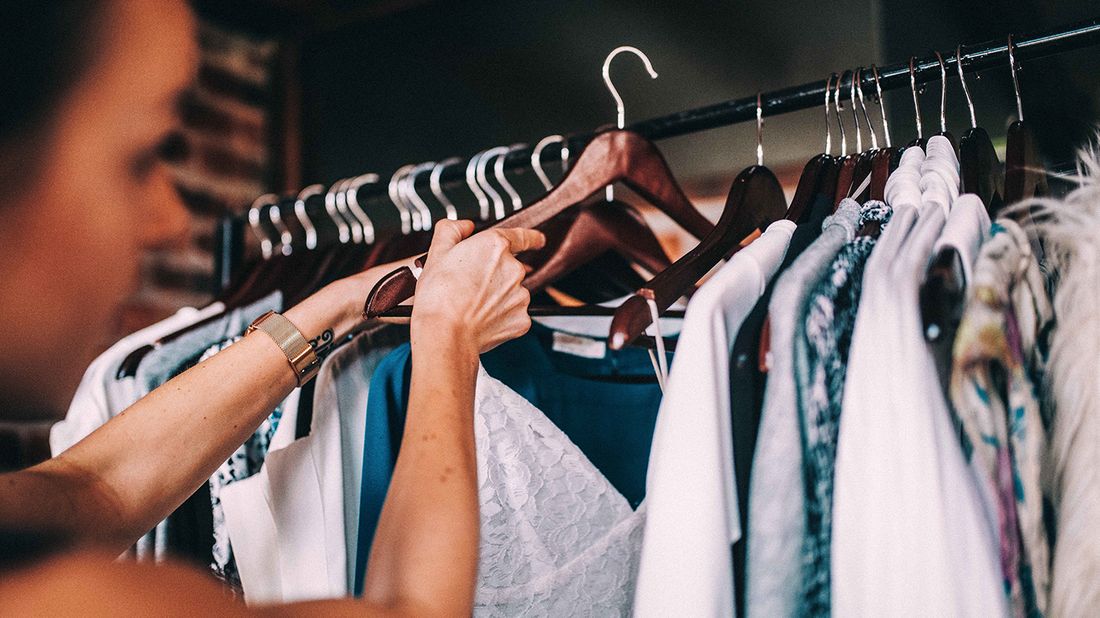I Tried Swedish Death Cleaning, the New Decluttering Trend

Think of her as a morbid Marie Kondo.
Swedish death cleaning is a bit like the KonMari method, only instead of ridding yourself of things that don’t “spark joy,” you get rid of things that other people won’t want to deal with when you’re, well, gone.
That may sound a bit horrifying, but if you’ve ever had to sort through a deceased relative’s things, you can probably relate. In the new book “The Gentle Art of Swedish Death Cleaning” (January 2018, Scribner), Margareta Magnusson, a Swedish artist who lists her age as “80 to 100,” lays out the decluttering trend. As soon as I heard about Swedish death cleaning, I wanted to try it. Not because I plan to die anytime soon, but because I’ve been running dangerously low on closet space. (Although the book is written primarily for seniors, Magnusson also recommends her strategy for younger people, to keep from accumulating clutter.)
Reading the book feels a lot like spending the afternoon with your grandmother, which I personally found charming. Magnusson, who sadly handled the death cleanings after her mother and husband passed away, details her experience of sorting through her own stuff to save her relatives the burden.
So how does one begin a Swedish death cleaning? Magnusson recommends dividing your belongings by category and tackling the easiest one first. Her go-to is clothing: “I always choose clothes as my first category,” she writes. “That is easy for me since I know that I have many garments in my wardrobe that I seldom or never use.”
I had serious doubts that my overstuffed closet was really the “easiest” place to start, but I went with it anyway. Magnusson’s instructions were rather sparse: “Sort all your clothes into two piles,” she writes. “Pile 1 is for clothes you want to keep. Pile 2 is for clothes you want to get rid of.” By doing this, she says, she was able to whittle down her wardrobe to two dresses, five scarves, a jacket and two pairs of shoes. “Yeah, that’s not happening,” I said to myself, as I began tugging items out of my closet.
But as the clothes started piling up on my bed, I was shocked to see Pile 2 growing and growing. It completely dwarfed Pile 1, at about four times its size.
There were a lot of memories in Pile 2. Well-loved items, like a favorite sweater from 2005, all pilly and stretched. A bridesmaid’s dress from a friend’s wedding. A vintage dress I wore in high school. I realized I had hung onto these things hoping to preserve those memories.
To my shame, there were also a few never-worn items with the tags still attached in Pile 2, like the Banana Republic dress that I thought would fit better if I lost five pounds (which — surprise, surprise — I didn’t ever lose). It seemed so wasteful. I guess I had thought I should wear or sell these items, but I had never done either. So there they remained, taking up space in my closet for years before finally making their way to Pile 2.
At the end of the two-hour process, I was left with four big bags of clothes to donate and a lot more space in my closet. Of course, I kept quite a few more than two dresses (more like 30), but now my closet is full of clothes I actually wear. I can see my wardrobe clearly, and I even rediscovered a few items that I’m excited to add to my rotation. (I still haven’t gone through my shoes yet. Shhh!)
My biggest takeaway from the exercise (other than that reading a book titled “The Gentle Art of Swedish Death Cleaning” makes your loved ones uncomfortable) is that you can maintain memories without clinging to stuff. For Magnusson, that meant coming to terms with the fact that her family wasn’t as sentimental about some belongings as she was. For instance, she’d kept the kitchen table where her kids used to race their spoons in an imaginary regata, thinking one of them would want it someday. But when she finally asked, they all said, “No.” In the end, one of the kids caved and took the table, but “we learned,” she writes, “not to hang on to things that nobody seems to want.”
Feel better about taking action on your dreams.
Your advisor will get to know what’s important to you now and years from now. They can help you personalize a comprehensive plan that gives you the confidence that you’re taking the right steps.
Find your advisor




